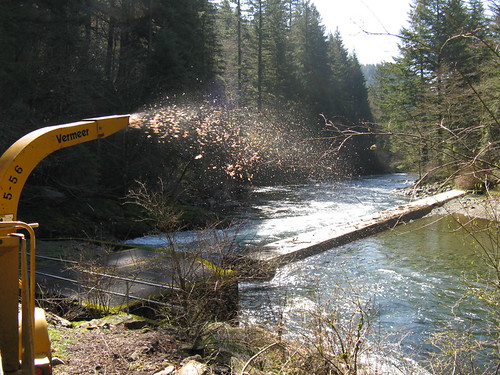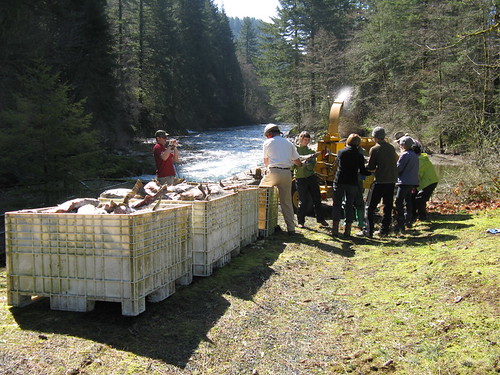Last Saturday I set off on an adventure with my Watershed Stewards team. I'll admit... I wasn't so much looking forward to the main event... fish chipping. Turns out... when you know the full story, it's actually quite amazing. This is how it works (at least to the best of my memory):
In the natural world, once salmon spawn they die. Their bodies then decompose and replenish the ecosystem. Obviously, hatcheries are not natural. When hatchery salmon return to spawn, their eggs are cut out by workers for artificial insemination. When the egg quota is reached, the remaining returning fish are bopped on the head. Hatchery carcasses ("carcs") are sold to cat food companies. If cat food companies don't want them or can't use enough of them, they take a quick ride to the landfill. The nutrients in the salmon are not returned to the ecosystem, weakening the habitat for future generations. Bad.
This is where fish chipping steps in. Unwanted hatchery carcasses are kept frozen until most needed by the ecosystem (typically spring and fall). Volunteers of all kinds join in to feed the carcs into a wood chipper (yes, a wood chipper!). The chopped up bits of salmon fly back out into the river becoming food for the young fish either coming off of or entering into a long winter.
So what seemed like a repulsive project involving maiming carcasses, actually turned out to be an amazing way to support the ecosystem.
I can't say I didn't get smattered with fish guts, but I can say I helped keep 600 salmon out of a landfill and supported the new fish generation. I was also grateful to have a stuffy nose so that I didn't have to experience the smell. The larger fish remained frozen, but a few of the little ones were starting to thaw... eww!





3 comments:
I have never heard of such a thing. What a great way to improve the sustainability of operations like hatcheries, which are kind of applauded and despised in the enviro field.
Yes, I find them a little bizarre myself. We also went to a different restoration site and deposited salmon into spawning areas. The guy we went with does incredible work along the river with logs creating better habitat for salmon. So that's what I missed your party for!
HA! rad.
Post a Comment